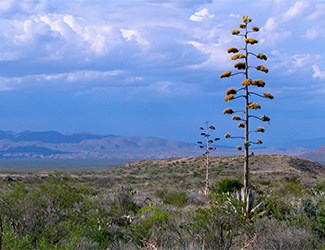
NPS Photo/Jennette Jurado Agaves There are eleven species of agave in Texas, three of which are found in Big Bend National Park. The gigantic Havard Agave (Agave havardiana) is one of the most visible icons in the park, but the most numerous is Lechuguilla (Agave lecheguilla). Lechugilla, like the Joshua Tree (Yucca breifolia) of the Mohave Desert, is the indicator plant of this desert. Lechuguilla is found in all portions of the Chihuahuan Desert from Texas and New Mexico to south central Mexico, but not found anywhere else. These low-growing plants (only about a foot in height), are especially common in gravelly, limestone areas. The plants have thick, leathery leaves with dagger-sharp terminal spines and often grow in massive colonies that can be nearly impenetrable by foot or horseback. Lechuguilla was a very important source of fiber for Native Americans and is still used today to make rope in Mexico. The roots of the plant are high in saponins, so they taste bitter but are a good source of soap. The lechuguilla blooms once after growing three to twenty years. Agave havardiana, or century plant, is the largest agave in the park. It blooms once in its life after growing 20-50 years. Mexican long-nosed bats pollinate the bright yellow flowers. The leaves of the century plant have a blue-gray color. The century plant also provides an excellent source of fiber for ropes, mats, sandals, etc. The hearts of the plants were harvested by the Native Americans and then baked in a stone-lined pit for two to three days. Once baked, the plant provided a source of food that could be dried and stored to help them to survive the long winter. The dried flower stalks served as building material. Century plants in Mexico provide the alcoholic beverages of pulque, mescal, and tequila. The third agave in Big Bend National Park is actually a hybrid. Agave gracilipes is the plant that occurs when the century plant and lechuguilla cross breed. It looks like a large lechuguilla or a small century plant. It also provided fiber for the Native Americans.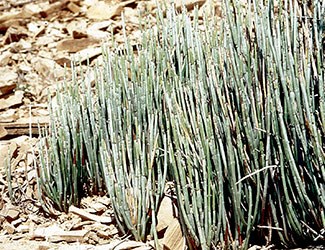
NPS Photo/Big Bend National Park Another succulent found in the Big Bend, called Candellia (Euphorbia antisyphilitica), has had several periods of regional significance throughout recent history. This plant has adapted to the desert environment with a waxy coating on its stems that reduces evapotranspiration. Early settlers found that by processing the plant, the wax could be separated. The wax has been used in everything from waterproofing to cosmetics to pharmaceutical coatings. A number of commercial processing facilities were built at places like Glenn and McKinney Springs in the early 20th century, and indigenous peoples developed small-scale operations along the Rio Grande to produce the wax in small quantities for trade with the U.S. and the Mexican Government wax-buying agencies. 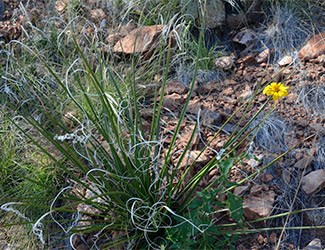
NPS Photo/Cookie Ballou Nolina species have linear leaves that are long, numerous, and clustered. Margins of the leaves are finely toothed. The flower is short stemmed, with cream-colored flowers. The leaves were an important source of material for mats, sandals, and basket making. However, the plant was not eaten since it is poisonous and could cause liver and kidney damage. There are five species in the Trans-Pecos area and 30 species in the U.S. and Mexico. 
NPS Photo/Jennette Jurado When in bloom, Ocotillo (Fouquieria splendens) is among the desert's most beautiful plants. In mid-spring, brilliant, fiery red-orange tubular flowers appear in clusters at the tips of the plant's tall, sharply-spined stems. Flowers are pollinated by bees, butterflies, and many other insects, but they are also flashy beacons, attracting hummingbirds and orioles who appreciate their sweet nectar. These unusual looking plants remain dormant throughout much of the year, but leaf out within 24–48 hours after sufficient rains. The leaves drop when the plant can no longer wick moisture from the soil. This adaptation allows the plant to take full advantage of limited desert precipitation, while surviving long dry spells. 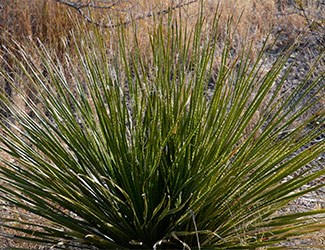
NPS Photo/Cookie Ballou Sotol 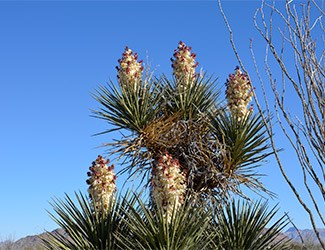
NPS Photo/Cookie Ballou Yuccas |
Last updated: April 4, 2022
